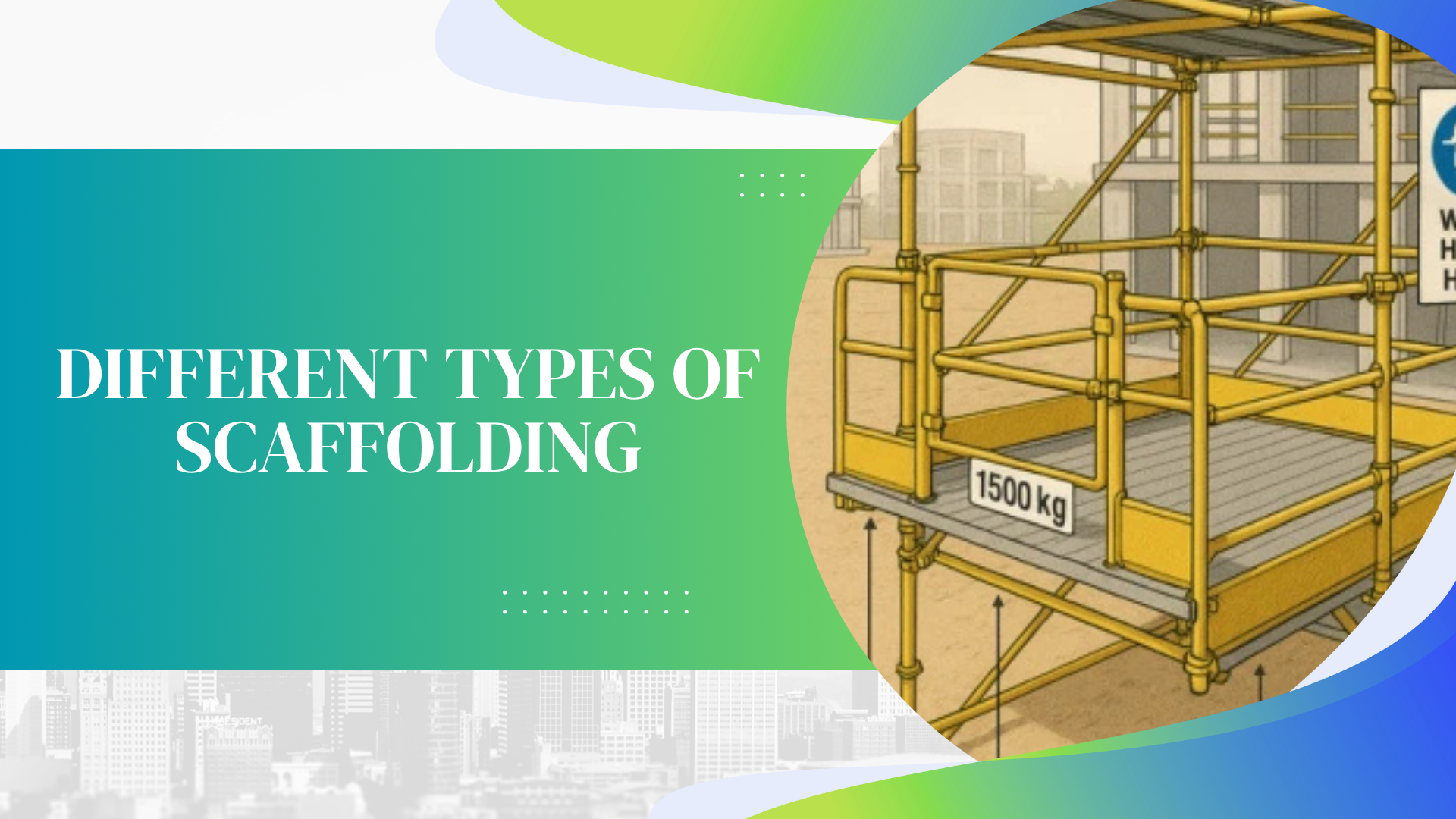Different Types of Scaffolding: Building Safety, Strength, and Efficiency on Every Site

In the world of construction, scaffolding is one of the most essential structures — providing safety, accessibility, and support to workers during the building process. Whether it’s a high-rise tower, a bridge, or a renovation project, scaffolding forms the backbone of any construction site. Understanding the different types of scaffolding is vital for ensuring that every project runs smoothly, safely, and efficiently. Each type is designed for specific purposes, making it important to choose the right system for your project’s requirements.
What Is Scaffolding?
Scaffolding is a temporary structure built to support workers and materials during construction, maintenance, or repair work. It provides a stable working platform at various heights, enabling safe access to hard-to-reach areas. Scaffolding not only enhances worker safety but also boosts productivity by allowing smoother movement of tools and materials across different levels of a structure.
Modern scaffolding systems are designed with innovative materials like steel, aluminum, and composite boards, ensuring durability and easy assembly. However, the type of scaffolding you choose depends on your project’s scope, design, and environment.
Different Types of Scaffolding and Their Uses
Let’s explore the different types of scaffolding used across the construction industry and how each serves a unique purpose.
1. Single Scaffolding
Also known as brick layer’s scaffolding, this type is widely used in masonry work. It consists of a single row of standards (vertical posts) placed parallel to the wall, connected by ledgers and putlogs. Single scaffolding is simple, cost-effective, and ideal for smaller projects such as brickwork and repairs.
Key Features:
a. Easy to construct and dismantle
b. Suitable for light construction tasks
c. Commonly used for maintenance and wall repairs
2. Double Scaffolding
Commonly referred to as mason’s scaffolding, this type is used in stone masonry work where it’s difficult to drill holes in walls for support. Double scaffolding features two rows of standards, providing greater strength and stability. It’s perfect for heavier tasks that require additional support and load-bearing capacity.
Key Features:
a. Extremely strong and durable
b. Ideal for stone masonry or large structural work
c. Offers double-layered support for improved safety
3. Cantilever Scaffolding
Cantilever scaffolding is used when the ground cannot support standards — such as on busy streets or upper floors. It’s supported by a series of needles fixed into the wall, projecting outward to carry the working platform.
Key Features:
a. Space-efficient, perfect for congested areas
b. No need for ground support
c. Best suited for multi-story buildings or bridges
4. Suspended Scaffolding
This type of scaffolding is suspended from the top of a building using ropes or chains and can be raised or lowered as needed. Suspended scaffolding is commonly used for exterior painting, glass installation, or façade maintenance.
Key Features:
a. Height adjustable
b. Ideal for high-rise buildings
c. Provides excellent accessibility with minimal ground obstruction
5. Trestle Scaffolding
Trestle scaffolding consists of a working platform supported by movable tripods or ladders. It’s typically used indoors for painting, plastering, or light repair work.
Key Features:
a. Portable and easy to set up
b. Great for indoor or low-height applications
c. Lightweight and reusable
6. Steel Scaffolding
Steel scaffolding is one of the most commonly used modern systems. Made from steel tubes connected with couplers or fittings, it offers maximum strength, durability, and fire resistance. This type is suitable for large-scale and long-term projects.
Key Features:
a. Highly durable and stable
b. Resistant to fire and corrosion
c. Suitable for heavy-duty construction and industrial use
7. Patented Scaffolding
Patented scaffolding is pre-engineered and comes with special couplings and frames. These systems are easy to assemble and dismantle, offering adjustable heights and enhanced safety.
Key Features:
a. Ready-to-use modular system
b. Adjustable platforms for different heights
c. Perfect for commercial and industrial projects
Choosing the Right Scaffolding for Your Project
Selecting the right scaffolding depends on your project size, height requirements, site conditions, and safety regulations. For instance, steel scaffolding suits large industrial sites, while trestle or suspended scaffolding works best for small-scale or specialized tasks.
Partnering with a professional scaffolding provider ensures that your project adheres to safety standards, compliance codes, and quality assurance, reducing downtime and enhancing overall productivity.
Conclusion
Understanding the different types of scaffolding helps you make smarter, safer, and more cost-effective decisions for your construction project. Each type offers unique advantages designed to meet specific site needs and safety requirements. From single and double scaffolding to advanced steel and patented systems, every scaffold plays a vital role in shaping reliable and efficient construction outcomes.
When safety and precision matter most, choosing the right scaffolding system ensures your project stands tall — both literally and structurally.
- AI
- Vitamins
- Health
- Admin/office jobs
- News
- Art
- Causes
- Crafts
- Dance
- Drinks
- Film
- Fitness
- Food
- Jocuri
- Gardening
- Health
- Home
- Literature
- Music
- Networking
- Alte
- Party
- Religion
- Shopping
- Sports
- Theater
- Wellness


